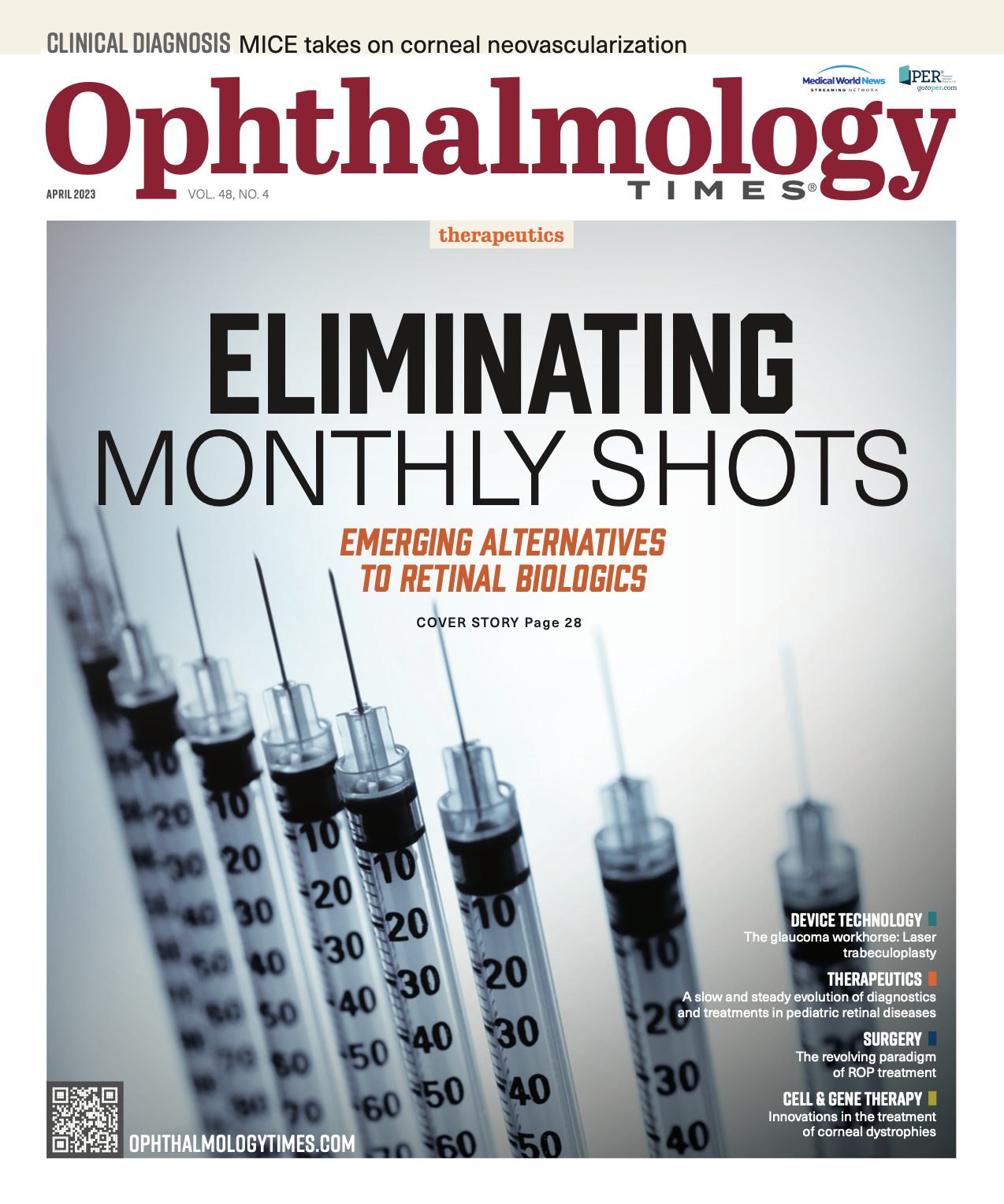Publication
Article
Digital Edition
Emerging alternatives to retinal biologics
Author(s):
Reducing treatment burden, finding something other than a shot a month is key.
Alternatives to a "shot a month" treatment for wet macular degeneration, dry macular degeneration, and central retinal vein occlusion are emerging. (Image Credit: Adobe Stock/Anton)

A shot a month is the treatment approach for many retinal conditions such as wet macular degeneration, dry macular degeneration, and central retinal vein occlusion, but alternatives to this approach for VEGF inhibitor treatment are now emerging, according to Christopher Riemann, MD.
Riemann is a vitreoretinal surgeon at the Cincinnati Eye Institute and a volunteer associate professor at the University of Cincinnati School of Medicine in Ohio.
Speaking at the 53rd Sally Letson Symposium in Ottawa, Ontario, Canada, Riemann noted the inconvenience of what has become the gold standard in the management of diabetic macular edema (DME): the repeated and sometimes indefinite treatments of VEGF inhibitor therapy. “The idea of reducing treatment burden and finding something other than a shot a month is important,” he said.
Because of the vast need for intravitreal injections, general ophthalmologists have to perform these injections in some geographic areas, Riemann noted.
“It is a straightforward procedure and an opportunity for growth in a practice, but there are downsides to doing these injections, such as the risk of endophthalmitis, glaucoma, hemorrhage, [and] retinal detachment,” he said. “There may also be standard-of-care issues depending [on] where you are located, and there may be medicolegal exposure.”
About a decade after bevacizumab became commonly used to manage wet macular degeneration, stories linking the treatment to infection began to appear in the nonmedical press, prompting patients to ask their ophthalmologists about this treatment and the risks involved, Riemann pointed out. Riemann reviewed data on 83,000 intravitreal injections performed between 2002 and 2013 and found the risk of endophthalmitis from bevacizumab injection was very low and met the standard of care. Upon performing a deeper dive into the data, however, Riemann and his co-investigators found that therapies involving unsterile processing resulted in a much higher rate of endophthalmitis compared with those involving sterile processing: 1 in 2778 vs 1 in 36,130, respectively.
Several strategies exist to improve the safety of the injection, such as choosing drugs that are ready to inject, using better technique, and decreasing the overall injection burden, according to Riemann. He also noted new complement inhibitors for geographic atrophy are not therapies that are ready to inject.
Given the epidemic of diabetes, the need for management of diabetic retinopathy will only grow, according to Riemann. Because patients with DME see physicians frequently (every 2 weeks on average) and for a variety of reasons unrelated to their ophthalmological health, adding frequent intravitreal injections to their packed health care visit is not viable.
“If you add a shot a month [for DME] to that [schedule of many health care visits], it is not sustainable,” Riemann noted, adding that real-world data from the PALADIN phase 4 trial (NCT02424019) demonstrated these patients are undertreated and lose vision over time.
Moreover, some patients may not adequately respond to VEGF inhibitors, leaving them with an unmet need, and there is the perennial risk of endophthalmitis. As an alternative, steroid-based therapy is effective in the management of DME, because steroids block not only VEGF but also cytokines, SDF-1, and ICAM-1, according to Riemann.
One steroid-based therapy is fluocinolone acetonide intravitreal implant, which has a durable effect.
“This is a drug that can work for 3 years [to manage DME],” said Riemann, pointing out data from the FAME [NCT00344968], PALADIN (NCT02424019), and USER trials that demonstrated the efficacy of the steroid intravitreal implant by optical coherence tomography (OCT) results and gains in vision.
“Retinal thickness variability, or fluctuations over time in OCT, is dramatically reduced,” Riemann pointed out. “Looking at retinal thickness variability is a new way of looking at drug efficacy.”
The USER study examined the impact of therapies that preceded the steroid intravitreal implant and the impact of these therapies up to 2 years after the steroid pellet was implanted, according to Riemann. “Treatment burden reductions were substantial in these patients, and patients who were not doing well on a shot a month had improved visual acuity,” he said. “Their OCT results got better as well.”
Riemann and colleagues conducted a post-hoc analysis of the USER study, evaluating whether the fluocinolone acetonide intravitreal implant had an impact on DME retinal thickness variability. They found the implant resulted in significantly reduced fluctuations, thus providing greater stability and improvement in vision.1 This analysis adds to the accumulating evidence for alternatives to VEGF inhibitors.
“This shows that anti-VEGF agents are not the only answer,” Riemann said.
Another approach for managing macular degeneration apart from VEGF inhibitors is gene therapy, with several companies investigating possible candidate therapies.
“This is an unbelievably exciting time to be a vitreoretinal specialist,” Riemann concluded. “There is so much innovation and great investment going on.”
Christopher Riemann, MD
P: 513-506-9459
This article is based on a presentation by Riemann at the 53rd Sally Letson Symposium from September 8 to 10 in Ottawa, Ontario, Canada. He serves as a consultant and speaker for several companies. He receives money for research from Applied Genetic Technologies Corporation, Alcon, Alimera Sciences, Allergan, Arepio, BioTime/Lineage Cell Therapeutics, Chengdu Kanghong, Clearside Biomedical, Genentech/Roche, Gyroscope Therapeutics, Janssen/Johnson & Johnson, Lowy Medical Research Institute/MacTel, Neurotech, Nightstar Therapeutics/Biogen, Notal Vision, Novartis, Ophthotec/IVERIC bio, Regeneron Pharmaceuticals, REGENIXBIO, and Spark Therapeutics.
Reference:
1. Riemann CD, Eaton AM, Cutino A. Reduction in retinal thickness fluctuations after treatment with fluocinolone acetonide implant for DME: a post-hoc analysis of the USER study. Ophthalmic Surg Lasers Imaging Retina. 2020;51(5):298-306. doi:10.3928/23258160-20200501-09

Newsletter
Don’t miss out—get Ophthalmology Times updates on the latest clinical advancements and expert interviews, straight to your inbox.





